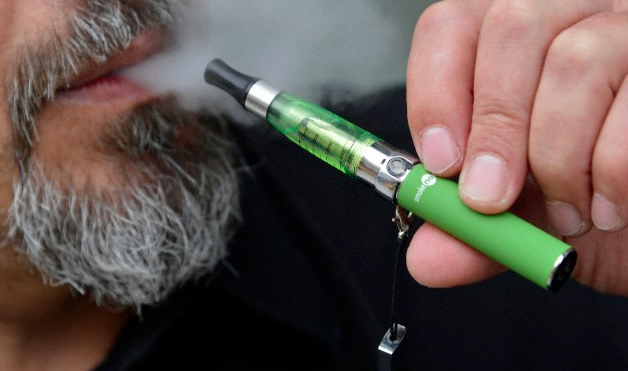
Instead of inhaling smoke as with regular cigarettes, users of e-cigarettes inhale vaporized liquid made up of a mixture of water and nicotine as well as other substances sometimes added for flavor and texture.
Since this vapor has a much lower content of carcinogens than traditional cigarettes, and since people tend to take fewer puffs on average (and thereby inhale less of the product), e-cigarettes seem to have a lower risk for both smokers and bystanders.
But this is only part of the picture, cautions Jock Lawrason, M.D., a pulmonologist and chief medical officer for Nantucket Cottage Hospital in Massachusetts. Once the vaporized nicotine is inhaled, it enters the bloodstream through the lungs and stimulates receptors in the brain to satisfy the ongoing need for nicotine.
“E-cigarettes don’t have the dangerous chemicals and irritants that we are exposed to from regular cigarettes such as tars and other carcinogens, but they do have nicotine in them, which is still isn’t safe.”
Dr. Lawrason adds that nicotine is known to produce several reactions in our bodies, including rapid heartbeat, increased blood pressure, reduction in the oxygen supply of vital organs, blood clots, and reduced insulin levels, and may cause certain cancers on its own – no smoke required.
Another major concern, noted by the CDC, is that while several e-cigarette manufacturers make models that deliver progressively lower amounts of nicotine (including models with zero nicotine), that’s only one ingredient.
“E-cigarette use is growing rapidly,” says CDC director Tom Frieden, M.D., M.P.H. “Yet there is still a lot we don’t know about these products.”
Including what exactly is in those sleek tubes since right now there is no rule forcing manufacturers to disclose the ingredients, although the FDA is trying to expand its authority.
Ingredients aside, inhaling the chemically induced vapor may cause problems. A study out of the University of Athens in Greece found that “vaping” caused an increase in airway resistance—a sign that your body is having a harder time breathing—in smokers and nonsmokers with healthy lungs, and at levels rivaling those of traditional cigarettes.
E- Cigarettes: Are There Any Benefits?
The one area where researchers see real promise for e-cigarettes is helping smokers quit. In a small study of 25 smokers lead by Keith Ablow, M.D., 75 percent of patients put tobacco away when given e-cigarettes, while 50 percent of those then stopped e-cigarettes as well, leading to full smoking cessation.
But this only seems to work if you’re replacing regular cigarettes with e-cigarettes and not using them in addition to other tobacco products, a pattern called “dual use” that Tim McAfee, M.D., M.P.H., director of the Office on Smoking and Health at CDC finds very concerning.
“If large numbers of adult smokers become users of both traditional cigarettes and e-cigarettes, the net public health effect could be quite negative,” he wrote in an official CDC position.
So if you are trying to kick the habit, e-cigarettes may help you, but if you don’t smoke, there’s no good reason to try electronically lighting up.
